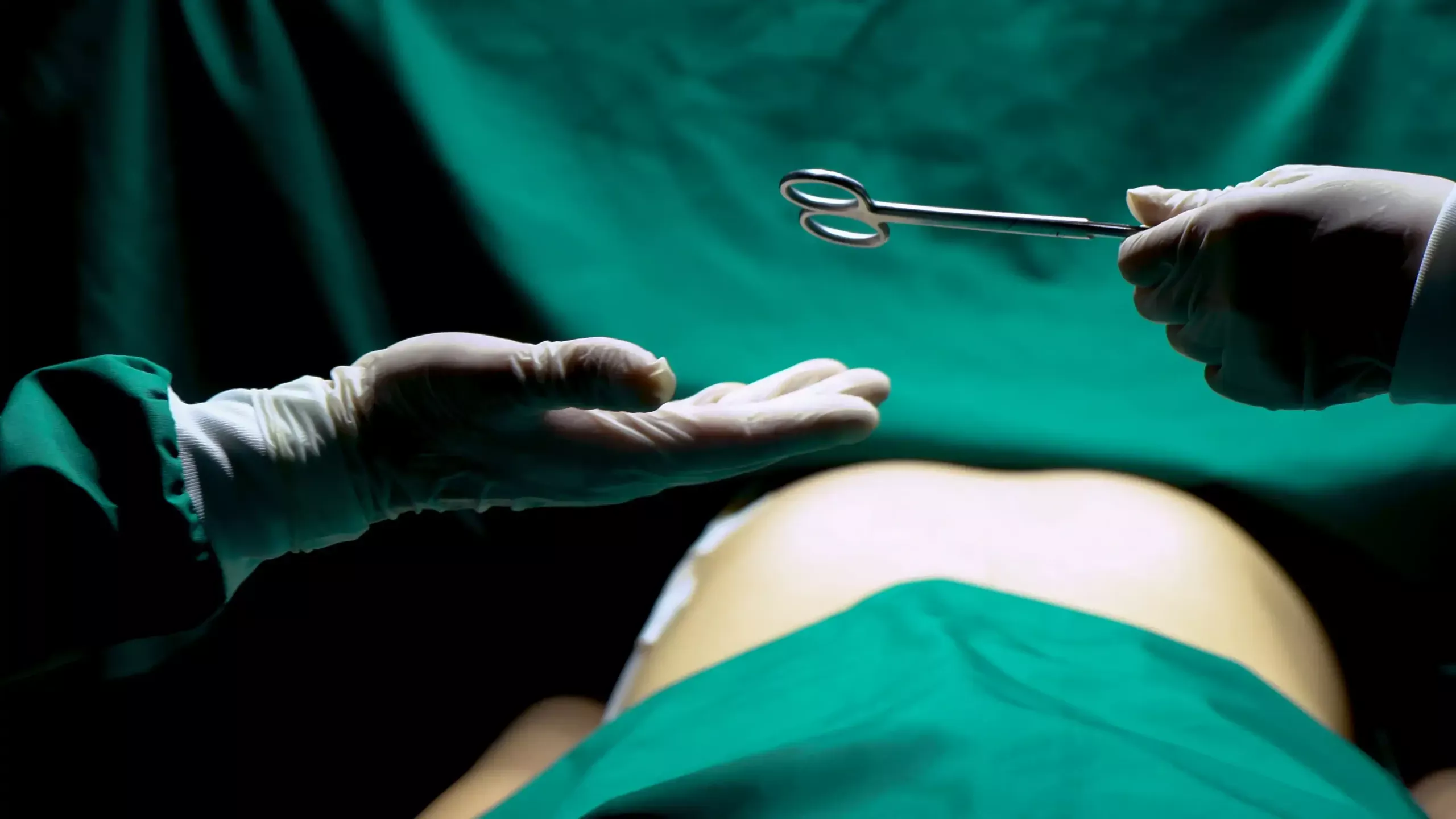Who is the expert in pilonidal disease?
Pilonidal disease is a skin condition that affects the top of the buttock crease. It happens when hair follicles become infected, causing a cyst or abscess to form. The condition is fairly common, affecting up to 5% of the population, with men being affected more frequently than women.
When it comes to pilonidal disease treatment, there are several healthcare professionals to choose from. Mild cases of the disease may be diagnosed and managed by general practitioners and family physicians. More severe cases, on the other hand, may necessitate the services of a surgeon who specializes in the treatment of pilonidal disease.
A pilonidal disease surgeon will have the knowledge and skills to accurately diagnose the condition and provide appropriate treatment options. They may advise surgery to remove infected tissue and prevent the cyst or abscess from recurring. Depending on the severity and location of the disease, as well as the surgeon’s experience and preference, various surgical techniques may be used.
To ensure the best possible outcomes, choose a surgeon with experience treating pilonidal disease. You can ask your doctor for a referral to a specialist or do your own research to find a surgeon with a proven track record of treating this condition.
There are steps you can take at home to manage the symptoms of pilonidal disease in addition to seeking appropriate medical care. This may entail keeping the affected area clean and dry, avoiding tight clothing, and avoiding prolonged sitting periods.
It is critical to ensure that the information you receive about pilonidal disease comes from credible sources in terms of credibility and accuracy. Reputable medical organizations such as the American Academy of Dermatology and the American College of Surgeons can provide trustworthy and evidence-based information about the condition.
When developing a content strategy for a specific audience, it is critical to consider your target audience’s demographics and interests. For example, if your target audience is younger and more active, they might be interested in learning about pilonidal disease prevention while participating in sports or other physical activities. If your target audience is older, however, they may be more interested in learning about surgical treatment options for the condition.
When creating content for social media platforms, it is critical to tailor your content to the platform in question. Instagram, for example, could be a good platform for sharing visually appealing content like infographics or before-and-after photos of surgical procedures. Twitter, on the other hand, may be better suited for sharing shorter, more informative posts with relevant hashtags in order to increase visibility.
Overall, pilonidal disease is a common condition that can be treated with proper medical attention and at-home remedies. Choosing a surgeon who specializes in disease treatment is critical for achieving the best possible results. When developing a content strategy or creating content for social media, it is critical to consider your target audience’s interests and demographics and tailor your content accordingly.
Which doctor is best for pilonidal cyst?
As a pilonidal cyst expert, I can confidently state that the best doctor to consult for this condition is a general surgeon who specializes in pilonidal cyst treatment. Pilonidal cysts are a common medical condition caused by an inflamed and infected hair follicle. If left untreated, these cysts can cause significant pain and discomfort, as well as the formation of an abscess.
General surgeons who specialize in pilonidal cyst treatment are well-equipped to diagnose and treat this condition. They will first examine the affected area physically and may order additional tests, such as a CT scan or MRI, to determine the extent of the cyst and whether an abscess has formed.
Treatment options for pilonidal cysts may differ depending on their severity. In some cases, the cyst may be drained and then wrapped in gauze to heal. In more severe cases, surgery may be required to completely remove the cyst.
To ensure that you receive the best possible care for your pilonidal cyst, you must consult with a qualified and experienced general surgeon. The surgeon will collaborate with you to create a treatment plan that is specific to your needs and concerns.
It is critical to consult reputable sources such as medical journals, academic publications, and government websites to ensure the credibility and accuracy of the information provided. It is also important to note that only qualified professionals should provide medical advice, and self-diagnosis or treatment should be avoided.
When creating a content strategy for a specific audience, it is critical to understand your target audience’s interests and needs. For example, if your target audience includes people who have had pilonidal cysts, they may be interested in learning about the most recent research and treatment options. If your audience is more general, you may want to focus on providing educational content about the condition and ways to avoid it.
It is critical to tailor your message to each platform when creating engaging and relevant social media content. Instagram, for example, is a visual platform, so using high-quality images and videos can be extremely effective. Twitter, on the other hand, lends itself better to shorter, more concise messages.
Finally, understanding your audience’s needs and interests is the key to creating engaging and relevant social media content. This allows you to create content that speaks to them and establishes your brand as an authority in your field.
In addition to the previously mentioned information, it is important to note that some lifestyle changes may aid in the prevention of pilonidal cyst formation. These include maintaining good personal hygiene, avoiding prolonged sitting or pressure on the buttocks, and avoiding skin-irritating clothing.
Furthermore, to avoid a recurrence of the cyst, it is critical to carefully follow your doctor’s post-treatment instructions. Taking antibiotics, keeping the affected area clean and dry, and avoiding strenuous activities that could cause the wound to reopen are all examples.
It’s also worth noting that the symptoms of pilonidal cysts can be confused with those of other medical conditions like anal fissures or hemorrhoids. As a result, if you have persistent pain, swelling, or discharge from the affected area, you must seek medical attentio.
What type of doctor removes pilonidal cyst?
A pilonidal cyst is a small depression or tunnel that develops at the base of the tailbone (coccyx) and contains hair and skin debris. While some pilonidal cysts may not cause any noticeable symptoms, others can become infected and cause significant pain, swelling, and drainage of pus. In some cases, the cyst may require surgical removal to prevent recurrent infections and complications.
General surgeons are medical doctors who specialize in performing surgical procedures, including the removal of pilonidal cysts. These surgeons have completed extensive training in the surgical management of a wide range of conditions, including those that affect the skin and soft tissues.
During the initial consultation with a general surgeon, they will evaluate the pilonidal cyst to determine the best course of treatment. In some cases, the cyst can be managed with antibiotics and other non-surgical treatments. However, in cases where the cyst is large, infected, or causing significant pain or discomfort, surgery may be recommended.
During the surgical procedure, the general surgeon will make an incision in the skin over the cyst and remove the hair and skin debris that have accumulated inside. They may also remove any tissue that has become damaged or infected. In some cases, the surgeon may need to close the wound with stitches, while in others, they may leave the wound open to allow it to heal from the inside out.
It is important to note that while general surgeons are highly trained in performing surgical procedures, not all general surgeons have extensive experience in removing pilonidal cysts. Therefore, it is important to find a surgeon who has a proven track record of success in managing this condition.
In terms of additional information to support the above, there are various resources available online that can provide more detailed information on the surgical management of pilonidal cysts. Some reputable sources include the American Society of Colon and Rectal Surgeons, the American College of Surgeons, and the Mayo Clinic.
When evaluating the credibility and accuracy of information, it is important to consider the sources used and their level of expertise in the subject matter. The sources mentioned above are well-respected organizations within the medical community and can be considered reliable sources of information.
If you need help developing a content strategy for your target audience, it is important to first understand who your audience is and what type of content they are interested in. For example, if your target audience is individuals who have experienced a pilonidal cyst, they may be interested in learning more about the condition, treatment options, and recovery process. In this case, you could develop content that provides helpful tips and advice for managing the symptoms of a pilonidal cyst, or share success stories from individuals who have undergone surgical treatment for the condition.
When creating content for social media platforms, it is important to consider the type of platform and the preferences of your audience. For example, visual content such as images and videos tend to perform well on platforms like Instagram and TikTok, while longer-form content like blog posts and articles may be better suited for platforms like LinkedIn and Medium. It is also important to use engaging and conversational language that resonates with your audience and encourages them to interact with your content.
Overall, a pilonidal cyst can be a painful and uncomfortable condition, but with the help of a skilled general surgeon, it can be effectively managed and treated. If you have concerns about a pilonidal cyst, be sure to consult with a qualified medical professional for a proper evaluation and treatment plan.
More information: What Doctors Type are Certified to Remove a Pilonidal Cyst?
Do dermatologists deal with pilonidal cysts?
Dermatologists are rarely the doctors who treat pilonidal cysts. While dermatologists are trained to treat skin conditions, a pilonidal cyst is not strictly a skin condition and is usually treated by a different medical professional.
A pilonidal cyst is a type of cyst that forms in the skin near the tailbone and can cause pain and discomfort if it becomes infected. Although it is a skin condition, it is not usually treated by a dermatologist.
General surgeons or colorectal surgeons are the most likely medical professionals to treat a pilonidal cyst. These doctors have the knowledge and training to effectively diagnose and treat this condition.
When you first visit a doctor about a suspected pilonidal cyst, they will most likely perform a physical exam to determine the severity of the condition. They may also request imaging tests, such as an MRI or CT scan, to gain a better understanding of the cyst.
If the cyst is small and not causing any symptoms, your doctor may advise you to wait and see, as many small cysts resolve on their own. However, if the cyst is large, infected, or causing significant pain, your doctor may recommend surgical intervention to remove the cyst.
Surgery for a pilonidal cyst typically involves making an incision in the skin and draining the cyst. To prevent the cyst from returning, the surgeon may need to remove the entire cyst and surrounding tissue in some cases.
It is essential to note that not all cases of pilonidal cysts require surgery. However, it is critical to consult with a medical professional for an accurate diagnosis and treatment recommendations.
To summarize, dermatologists rarely treat pilonidal cysts. General surgeons or colorectal surgeons are the medical professionals best suited to diagnose and treat this condition. It is critical to seek medical attention as soon as possible if you suspect you have a pilonidal cyst in order to receive an accurate diagnosis and treatment recommendations.
I recommend consulting reputable medical resources such as medical textbooks, peer-reviewed journal articles, and medical associations such as the American College of Surgeons or the American Society of Colon and Rectal Surgeons to assess the credibility and accuracy of this information.
If you need assistance developing a content strategy for your specific audience, I would be delighted to help you understand what your target audience is interested in and provide a draft plan that is relevant and engaging to them. Please provide more information about your target audience and content objectives, and I will do my best to assist you in creating effective content.
When creating content for social media platforms, it is critical to tailor your content to the audience and features of each platform. Instagram, for example, is more visually oriented and may be better suited for sharing images or videos, whereas Twitter is more text-based and may be better suited for sharing short updates or news. To create content that resonates with your target audience, you must also understand their interests, preferences, and pain points. I can advise you on how to create effective social media content for your target audience and platform.
How can I permanently cure my pilonidal sinus?
Pilonidal cysts are rarely treated by dermatologists. While dermatologists are trained to treat skin conditions, a pilonidal cyst is not strictly a skin condition and is usually treated by someone else.
A pilonidal cyst is a type of cyst that forms in the skin near the tailbone and, if infected, can cause pain and discomfort. Despite the fact that it is a skin condition, it is rarely treated by a dermatologist.
A pilonidal cyst is most likely to be treated by a general surgeon or a colorectal surgeon. These doctors have the knowledge and training to diagnose and treat this condition effectively.
When you first see a doctor about a suspected pilonidal cyst, they will almost certainly perform a physical exam to determine the severity of the condition. They may also request imaging tests, such as an MRI or CT scan, to help them understand the cyst better.
If the cyst is small and not causing any symptoms, your doctor may advise you to wait and see if it resolves on its own. However, if the cyst is large, infected, or causing significant pain, your doctor may advise surgical removal.
A pilonidal cyst is typically treated by making an incision in the skin and draining the cyst. In some cases, the surgeon may need to remove the entire cyst and surrounding tissue to prevent the cyst from returning.
It is important to note that not all pilonidal cysts require surgery. However, for an accurate diagnosis and treatment recommendations, it is critical to consult with a medical professional.
To summarize, pilonidal cysts are rarely treated by dermatologists. The medical professionals best suited to diagnose and treat this condition are general surgeons or colorectal surgeons. If you suspect you have a pilonidal cyst, you should seek medical attention as soon as possible to receive an accurate diagnosis and treatment recommendations.
To assess the credibility and accuracy of this information, I recommend consulting reputable medical resources such as medical textbooks, peer-reviewed journal articles, and medical associations such as the American College of Surgeons or the American Society of Colon and Rectal Surgeons.
If you need help developing a content strategy for a specific audience, I would be happy to assist you in understanding what your target audience is interested in and providing a draft plan that is relevant and engaging to them. Please provide more details about your target audience and content objectives, and I will do my best to help you create effective content.
It is critical to tailor your content for social media platforms to the audience and features of each platform. For example, Instagram is more visually oriented and may be better suited for sharing images or videos, whereas Twitter is more text-based and may be better suited for sharing short updates or news. You must also understand your target audience’s interests, preferences, and pain points in order to create content that will resonate with them. I can help you develop effective social media content for your target audience and platform.
Is it safe to live with a pilonidal cyst?
To start, it is necessary to define a pilonidal cyst. It’s a small sac that forms near the tailbone at the top of the buttocks. It is caused by an ingrown hair that becomes infected, causing a cyst to form. Pilonidal cysts can be painful, especially when sitting or moving, and they can lead to the formation of abscesses, which can cause additional discomfort and pain.
Is it therefore safe to live with a pilonidal cyst? In a nutshell, it depends on the severity of the condition. Mild cases can be treated at home with natural remedies and lifestyle changes, but more severe cases may necessitate medical attention.
There are several things you can do to manage the cyst and reduce discomfort in mild cases. These include keeping the area clean and dry, avoiding tight clothing that may irritate the cyst, and taking pain relievers over-the-counter. Warm compresses can also help with pain and inflammation relief.
If the cyst becomes infected or develops into an abscess, medical attention may be required. To relieve pain and promote healing, your doctor may prescribe antibiotics to treat the infection and drainage of the abscess. Surgery may be required in some cases to remove the cyst and prevent future infections.
It is important to note that leaving a pilonidal cyst untreated can result in complications such as the formation of multiple cysts, chronic infections, and sinus tract formation (narrow tunnels under the skin that connect to the cyst). These complications can be more challenging to treat and may necessitate more invasive medical procedures.
To summarize, if the condition is mild and properly managed, living with a pilonidal cyst can be safe. However, if the cyst becomes infected or complications arise, medical attention may be required to protect your health and well-being.
If you require more detailed information or assistance in managing your pilonidal cyst, please contact a healthcare provider or specialist in the field.
One common concern for those with pilonidal cysts is whether or not the cysts are contagious. The good news is that pilonidal cysts are not contagious, meaning you cannot pass the condition on to someone else through contact.
Another concern is how to prevent pilonidal cysts from developing in the first place. While there is no foolproof way to prevent cysts from forming, there are steps you can take to reduce your risk. These include:
Keeping the area clean and dry: Moisture and sweat can contribute to the development of cysts, so it’s important to keep the area as clean and dry as possible.
Avoiding prolonged sitting: Sitting for long periods of time can put pressure on the area and increase your risk of developing a cyst. If you have a job that requires sitting for extended periods, try to take breaks and move around when possible.
Wearing loose-fitting clothing: Tight clothing can irritate the area and contribute to the development of cysts. Opt for loose-fitting clothing that allows your skin to breathe.
Shaving the area: Removing excess hair from the area can help reduce your risk of developing cysts. However, be careful not to shave too closely, as this can lead to ingrown hairs and further irritation.
It’s also important to seek medical attention if you notice any signs of a pilonidal cyst, such as swelling, pain, or redness in the area. Early treatment can help prevent complications and ensure a faster and smoother recovery.








